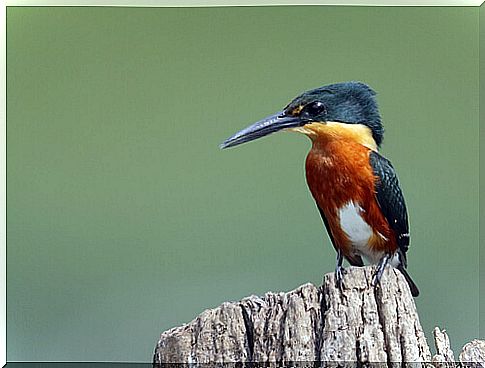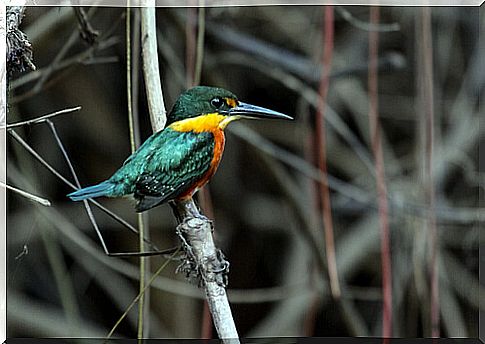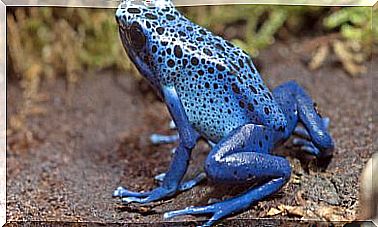Do You Know The Dwarf Kingfisher?

The dwarf kingfisher is a species of bird that is the miniature version of the common kingfisher. They share many characteristics, but differ primarily in size.
Physical characteristics of the dwarf kingfisher
The dwarf kingfisher, which belongs to the Cerylidae family and its scientific name is Chloroceryle aenea, is a brightly colored bird. Its head and wings are olive green. Its body and neck are bright yellow, almost orange, with a white patch on the stomach.
Despite its small size, it has a rather elongated beak that makes it easy for it to fish for its prey. This tiny bird can reach 13 centimeters long and weigh 18 grams.
There are not many differences between the males and females of this species of tiny birds. The only noticeable is a narrow green band on the female’s chest. On the other hand, the young are very similar to the adults, and they are only clearly differentiated by the size and opacity of their plumage.

Distribution and habitat of the dwarf kingfisher
It lives mainly in the tropical forests of the American continent. That is, from southern Mexico to central Brazil, passing through all of Central America, Ecuador and the north of the Andes mountain range. It can also be found in the Trinidad and Tobago archipelago.
Its general habitat is dense forests and mangroves with nearby water sources. The dwarf kingfisher is so small that it is easy to lose sight of it in the dense vegetation of its habitat, making it difficult to spot it. In addition, they tend to fly low and stay hidden in branches or on the ground.
Behavior of the dwarf kingfisher
The dwarf kingfisher usually lays three white eggs, and sometimes up to four, for each mating. Their nests are 40-centimeter-long tunnels built in the riverbanks, to be as close as possible to food sources. In some cases they can also take advantage of some earth mounds or termite mounds to build their nests.
Their songs are generally composed of short and quiet notes, although they can also sing fast and high notes. Their song can be described onomatopoeically in a set of weak: ‘tik’ and ‘cht-cht’.

The diet of the dwarf kingfisher is based on insects and fish that it hunts on the banks of rivers, such as cockroaches, trout, aquatic beetles and larvae. It waits patiently from the branches until it spots its prey to hunt it down. Upon detecting it, it rushes into the water to search for its prey, although it never dives deeper than 25 centimeters.
Despite their small size, they are territorial birds, fervently defending their territory. They take control of an area of the closest rivers, where their main source of food is. This is because you must ensure a sustained consumption of food, which must at least exceed 60% of your body weight. Therefore, fights with other congeners are frequent.
Due to its tiny size, the dwarf kingfisher has a wide variety of predators: the most common are hawks and snakes. Generally, when detecting a threat, this species of bird, like many others, move quickly almost erratically to mislead the hunter. They also make various noises until the threat ends.
Climate change is also negatively affecting the dwarf kingfisher, because it is a bird that is highly sensitive to any change in temperature, especially cold. In other words, extreme winters have gradually reduced the populations of this species. However, the dwarf kingfisher is not vulnerable according to the International Union for Conservation of Nature (IUCN).









